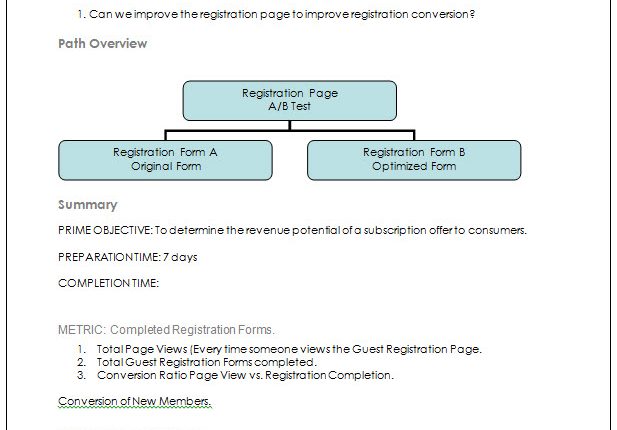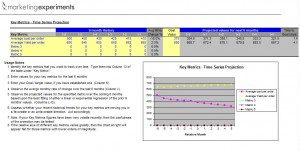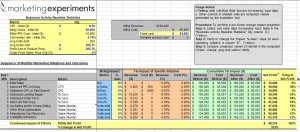During my experiences reviewing and archiving Test Protocols from the testing we do with our Research Partners, I believe some benefits of A/B testing can go ignored or overlooked if marketers do not follow a testing process.
In today’s MarketingExperiments Blog post, I wanted to share with you three simple benefits from having an online testing process to systematically learn more about your customers.
I also included a few free online testing tools that you can download to help get your test planning process started.
Benefit #1. Improved test planning
When a great testing idea is generated, we are normally very exciting about testing.
We are eager to see how the idea can build on our existing knowledge and produce positive gains for both customer research and the bottom line.
However, no matter how great our test idea and designs are, without proper planning prior to implementation, a test idea’s full potential will never be realized.
The A/B testing template is a simple template that walks you through the A/B split testing process.
Benefit #2. More reliable data
One of the biggest reasons I usually see a test being declared incomplete or abandoned is because of tracking problems.
I have even seen tests being abandoned all together due to unreliable data or no data at all.
Without a systematic testing program in place that uses front-end quality assurance measures and monitors for data anomalies, your testing efforts can become expensive exercises that leave you empty handed.
For example, during one of the tests we ran with a Research Partner, the testing site was hacked which caused a significantly uneven traffic split between the test treatments.
By monitoring the test, the event was caught as soon as it occurred, and it allowed the research team to take action quickly enough to minimize the effects and to address the biased testing metrics.
A simple spreadsheet tool will help you keep track of and monitor metrics during your online testing.
Benefit #3. Long-term savings
I remember a Research Partner’s project had five tests declared incomplete or abandoned before producing a test with any valuable results.
If we had simply ignored the problems we discovered or hadn’t bothered to document and report them properly, then those efforts and resources would have been completely lost.
On some occasions, I even experience a little pushback on documenting testing errors, as some people will even say, “We don’t like to address process failures, as our Research Partners do not like to admit their part in the errors. It sounds like a blame game.”
But the purpose of documentation and reporting has little to do with who’s at fault.
It’s more of a process of discovering what you should try to avoid in future testing.
So, I suggest your testing process include thorough documenting and reporting of errors along with the cause of the errors, no matter the circumstance, as this will save your organization a tremendous amount of time in the long run.
Also, here’s another spreadsheet tool you can use to help measure and estimate how incremental increases in conversion gained through testing will have an overall impact on your revenue stream.
Related Resources:
Marketing Analytics: 4 tips to boost confidence in your analytics reporting
Metrics and Analytics: 4 questions every marketer should ask their data analysts
Marketing Analytics: Should you use a daily or aggregate method to validate A/B test results?






